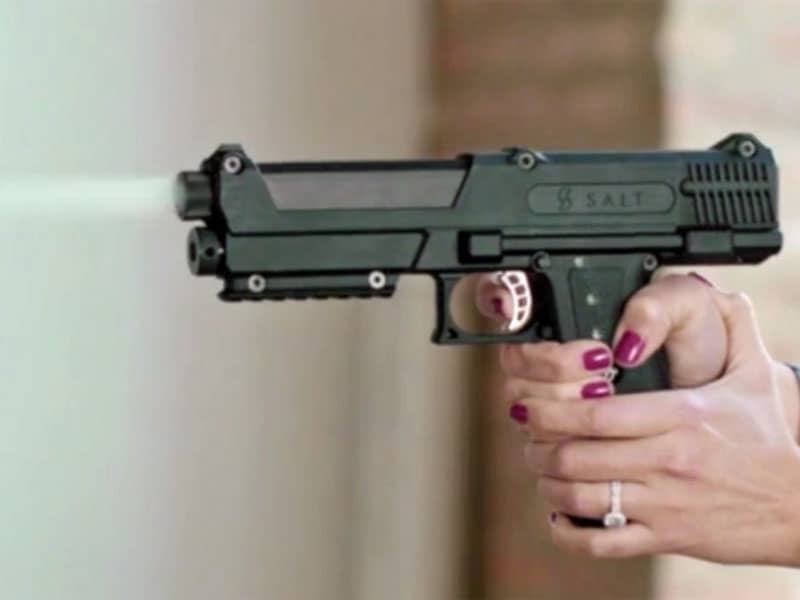Even, if you have got the best iron sights but if the sights are not adjusted the way they should be, they won’t hit the target. So they should be aligned to get the
line of sight to meet the point of impact with precision. Theoretically, it is possible in a single shot—fasten the firearm into a vise, fire a shot, and adjust the sights, resultingly, they point at the center of the target. However, in the real world, it generally takes numerous attempts to establish a group. Afterward, they are adjusted to move the line of sight closer to the group, and the process is repeated until the perfect alignment.
Vertical Adjustment (Up and down):
If the shot is above the target and needs to be lowered, the way to go about it is using both sights pointing straight at the target, the rear sight should be moved downwards, or the front sight should be moved upwards. If the shot is below the target and needs to be higher, it could be achieved using both sights facing towards the target, either the rear sight should be moved higher or the front sight should be lowered. Keep in mind: Adjust the rear sight in the same direction to get it in harmony with the point of impact to move & the front sight is adjusted on the contrary.
Horizontal Adjustment (Left and Right):
If the shot is a bit towards the left side from the target while using both sights facing directly towards it, the rear sight should be moved right, or the front sight should be moved left. If the shot is right from the target using both sights facing directly towards it, the rear sight should be moved left, or the front sight should be moved right. Keep in mind: Rear the same, front opposite if you want the point of impact to move.
Detailed instructions for adjusting the sights:
Most of the target sights have click adjustments, where a detent in the alignment screws allows the sight to move it a certain angular distance with each click. This specific distance is usually in minutes of arc, which translates to around 1 inch at 100 yards. On a firearm with 1-minute clicks, then, it would take a single click to move 1 inch at 100 yards, two clicks to move 1 inch at 50 yards, four clicks to move 1 inch at 25 yards, respectively. If click adjustments are not accessible, or the click interval is unknown, then the distance to increase or decrease the sight for a given point of aim adjustment is: D1 / R1 = D2 / R2
For rear sight adjustments:
D1 is the length between the point of aim and its impact point, respectively. R1 is the range from front sight to the point of target. D2 is the length of which the rear side should be in accordance. R2 is the length between the front and rear sights.
For front sight adjustments:
D1 is the length between the point of aim and its impact point. R1 is range from the rear sight to the desired target. D2 is the distance the front sight must, of which the backside should be in accordance. R2 is the circumference distance between the front and rear sights.
This formula is only used to calculate the magnitude of the sight height change; you can refer to the instructions above to find the correct direction for the adjustment with precision. Similarly, all distances should be in the same units to adjust and calculate. For instance, if a change in inches to the sight height is desired, and someone’s shooting on a 100-yard range, then R1 (100 yards) are converted to inches (100 × 36 = 3600 inches) prior to using this distance in the equation.
Understanding Through Example:
For instance, a rifle with a distance between the front and rear sights of 26.25 inches, fires on a 50-yard (1800 in) range, with the point of impact 5.3 inches towards the higher side on the target, having access to a front sight blade that is 0.505 inches high installed in a dovetail. Calculate the change in the height of the front side blade after fixing this problem? (It will be seen as that the muzzle of the rifle intrudes into the range area for abiding standard gun range safety protocols, and the rear sight is resultingly is 50 yards concerning the target. Note that: D2 = R2(D1/R1) = 26.25(5.3/1800) = 0.077″ (change of magnitude to front sight height perspective). Since the impact point of the bullet is high, the front sight must be lengthened by this much as the directions saw previously; Now, the front sight should be replaced with a blade that is 0.505″ + 0.077″ = 0.582 at higher side. With this correction, the gun will hit the point of impact as desired, and all other factors play equally.


